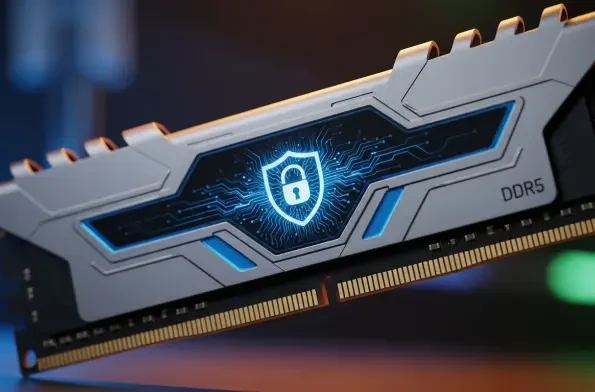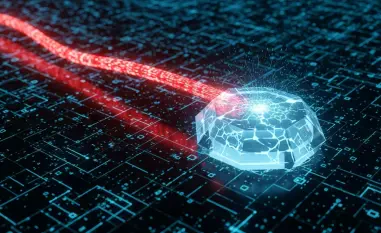In an era where high-performance computing powers everything from cloud servers to personal gaming rigs, a startling discovery has shaken the tech world: a critical security flaw in DDR5 memory, the latest standard in DRAM technology, has been exposed through a sophisticated attack known as Phoenix. This vulnerability, capable of breaching even the most advanced memory safeguards, poses a significant threat to data integrity and system reliability across industries. With DDR5 becoming the backbone of modern systems, understanding this trend of emerging memory vulnerabilities is paramount. This analysis delves into the specifics of the Phoenix Rowhammer attack, its far-reaching implications, the tech industry’s response, and the path forward for securing memory technology in an increasingly digital landscape.
Unveiling the Phoenix Rowhammer Attack on DDR5
Decoding the Attack Mechanism and Key Research Insights
A groundbreaking study by researchers from ETH Zurich and Google has introduced the Phoenix attack, tracked as CVE-2025-6202, a refined variant of the Rowhammer exploit specifically targeting DDR5 memory. Unlike earlier iterations, this method bypasses the in-DRAM Target Row Refresh (TRR) protections designed to thwart such vulnerabilities. The research meticulously reverse-engineered these safeguards, revealing that a successful exploit requires precise tracking of thousands of refresh operations to induce bit flips in memory cells.
Testing on 15 SK Hynix DDR5 devices demonstrated a 100% success rate, underscoring the attack’s potency. Phoenix employs intricate, synchronized patterns that align with refresh commands, ensuring consistent disruption of adjacent memory rows. This technique enabled the team to achieve privilege escalation, gaining root access on a standard system in just 109 seconds under default configurations, highlighting a severe gap in current DDR5 security measures.
The sophistication of Phoenix lies in its ability to detect and adapt to missed refresh operations, maintaining attack efficacy even under variable conditions. This adaptability marks a significant evolution from previous Rowhammer exploits, which were less dynamic and easier to mitigate. The findings signal an urgent need for updated defenses as memory technologies advance faster than their protective mechanisms.
Practical Risks and Real-World Applications
The implications of bit flips induced by Phoenix extend far beyond theoretical risks, posing tangible threats such as privilege escalation, data corruption, and breaches in memory isolation within virtualized environments. These vulnerabilities could allow attackers to gain unauthorized access to sensitive systems, manipulate critical data, or disrupt operations in high-stakes settings like financial servers or healthcare infrastructure.
Consider the potential impact on cloud computing platforms, where DDR5 memory is widely deployed to support massive data workloads. A successful attack could compromise entire virtual machines, exposing user data to theft or tampering. Similarly, personal devices and gaming systems adopting DDR5 for enhanced performance are at risk of exploitation, potentially leading to unauthorized control or data loss.
While the research focused on SK Hynix modules due to the intensive effort required to analyze specific mitigations, the broader concern is that DDR5 technology from other manufacturers may harbor similar weaknesses. This uncertainty amplifies the urgency for comprehensive testing and mitigation across the memory industry, as reliance on DDR5 continues to grow in critical applications.
Industry Perspectives on DDR5 Security Challenges
The collaborative team from ETH Zurich and Google has emphasized that Rowhammer attacks are evolving at a pace that outstrips current DDR5 protections, calling for a fundamental rethink of memory security. Their insights point to a persistent cat-and-mouse game between attackers and defenders, where each advancement in hardware opens new avenues for exploitation. This perspective underscores the dynamic nature of cyber threats facing modern memory standards.
Responses from key industry players, including SK Hynix, AMD, and major cloud providers, reflect a unified recognition of the severity of these vulnerabilities. Following the disclosure of Phoenix in early June, AMD swiftly rolled out BIOS updates to mitigate risks in client systems, while SK Hynix is reportedly working on hardware-level enhancements. Cloud providers, reliant on DDR5 for scalability, are also prioritizing patches and monitoring to safeguard their infrastructure.
Expert opinions further stress the importance of continuous innovation in mitigation strategies to counter increasingly sophisticated attacks. There is a growing consensus that static defenses, like existing TRR mechanisms, are insufficient against adaptive exploits like Phoenix. Industry leaders advocate for proactive research and cross-sector collaboration to develop resilient solutions that can keep pace with emerging threats.
Future Outlook for DDR5 Memory Security
Looking ahead, proposed solutions to counter Phoenix include tripling memory refresh rates, a measure that effectively prevents bit flips but introduces an 8.4% performance overhead. While this offers a short-term fix, it raises concerns about efficiency, particularly in performance-critical sectors like gaming and AI computing. Balancing security with speed remains a central challenge for widespread DDR5 adoption.
Another promising approach involves implementing per-row activation counters, which could provide a more robust defense without significant performance trade-offs. Such innovations hint at the potential for hardware-level redesigns in DRAM architecture, aiming to eliminate the root causes of Rowhammer vulnerabilities. Over the next few years, from 2025 to 2027, advancements in this area could redefine memory security standards across industries.
Long-term developments may also see deeper hardware-software integration, enabling dynamic threat detection and response at the system level. While these prospects offer hope for enhanced protection, challenges persist in ensuring that security measures do not hinder the scalability or cost-effectiveness of DDR5 technology. The path forward will likely involve a delicate balance, fostering innovation while addressing the diverse needs of data centers, consumer electronics, and specialized computing environments.
Navigating the Evolving Landscape of Memory Threats
Reflecting on the past, the exposure of the Phoenix Rowhammer attack marked a pivotal moment in understanding the fragility of DDR5 memory security, challenging the industry to confront gaps in existing safeguards like TRR. The successful exploitation of SK Hynix devices for privilege escalation underscored the real-world risks to data integrity and system stability, prompting immediate action through BIOS updates and strategic responses from key stakeholders.
Moving beyond this revelation, the tech community was galvanized to prioritize actionable steps, such as exploring increased refresh rates and per-row counters as interim defenses. Collaborative efforts between researchers, manufacturers, and providers emerged as a cornerstone for progress, setting a precedent for tackling future vulnerabilities.
As a next step, sustained investment in redesigning DRAM architectures and fostering hardware-software synergies offered a promising avenue to outmaneuver evolving threats. This proactive stance, built on the lessons of Phoenix, aimed to ensure that memory technology could support the digital landscape without compromising safety or performance, paving the way for a more secure technological future.













